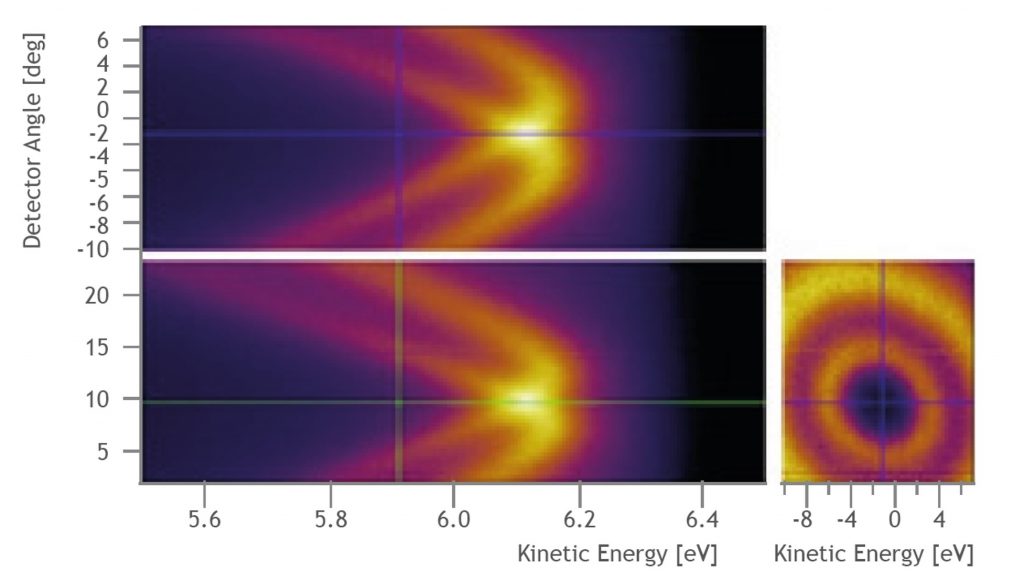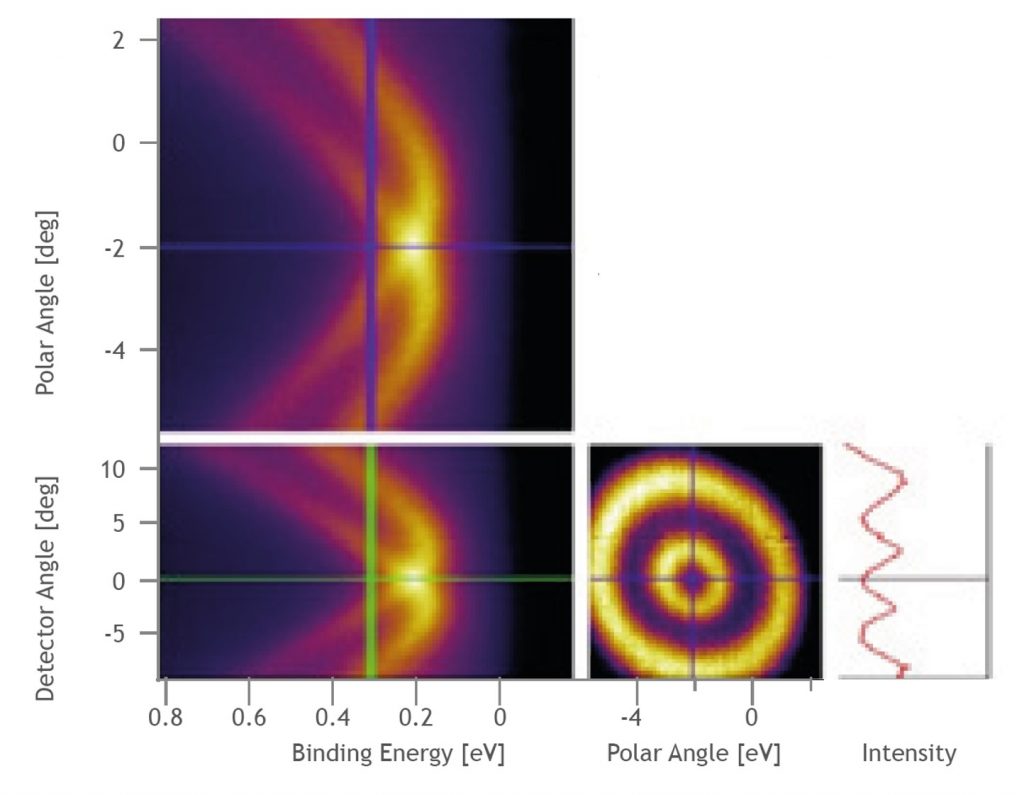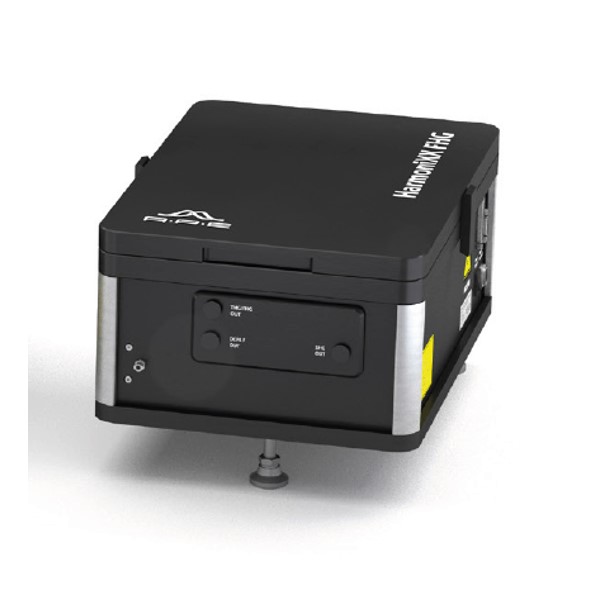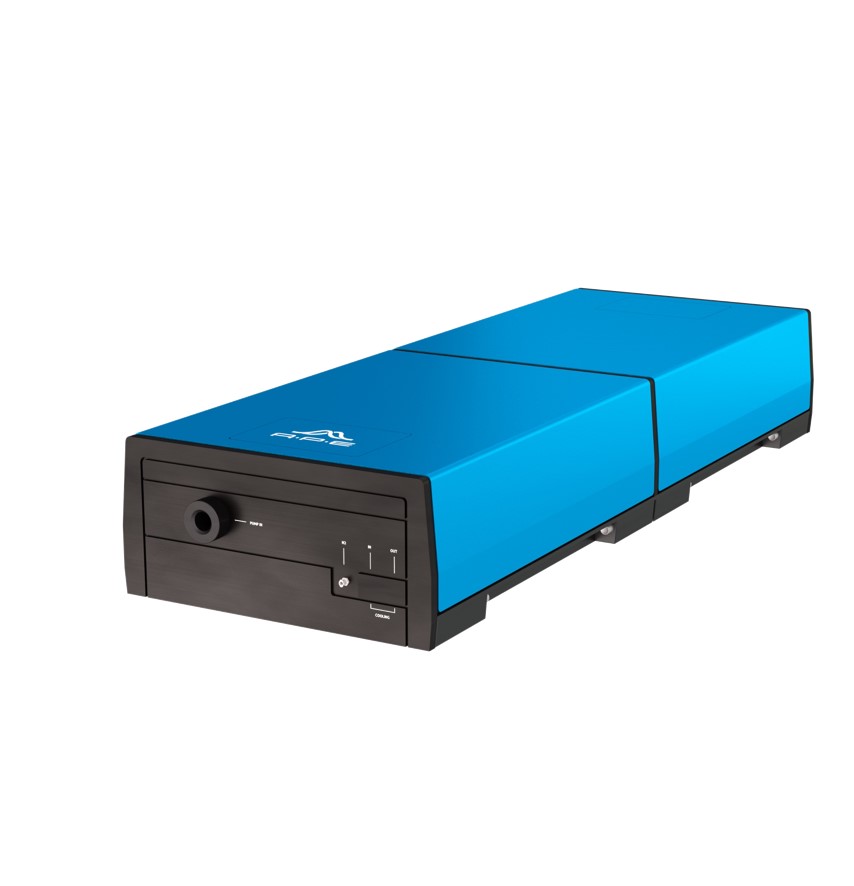Laser-based ARPES (Angle-Resolved Photo-Emission Spectroscopy) is a form of ARPES that uses a laser as an excitation source. Laser-based ARPES is operated with a narrow bandwidth UV laser source and offers several advantages over synchrotron radiation: A laser fits on a table (ok… a large table), and experiments can be performed at any time and independently of rare beam times in synchrotron facilities.
More technically speaking, a narrow-band UV laser offers a contantly high photon flux with an extremely high energy resolution of up to 0.1 meV. For comparison, the energy resolution of synchrotron radiation is typically in the range of 5 – 20 meV – and is therefore worse than the resolution of a good energy analyzer with about 1 meV.
The photon energy of the laser source can be varied between 5.77 eV and 6.5 eV. As these are low-energy photons, the Angle-Resolved Photo-Emission Spectroscopy benefits because the bulk sensitivity is significantly enhanced and the momentum resolution increased (compared to synchrotron radiation).
Low-energy photons are sufficient to induce photoemission in many samples. However, it should be noted that due to the lower photon energy compared to synchrotron radiation, Laser-ARPES is particularly suitable for the measurement of electronic states close to the Fermi level.
Laser ARPES/ARUPS with a High-Power UV Source
Tunable deep-UV pulses from 190 … 215 nm / 6.5 … 5.77 eV are available with APE’s ARPES-laser source, constiting of a HarmoniXX FHG in combination with Levante Emerald HP.
The energy-tunable system provides high laser power in the range of several mW. Its brillant and monochromatic laser light is ideally suited for high-resolution ARPES (Angle-resolved Photoemission Spectroscopy) or ARUPS (Angle-resolved Ultraviolet Photoemission Spectroscopy).
- Tunable (Vacuum)-UV from 190 … 215 nm / 6.5 … 5.77 eV
- Extremely narrow spectral bandwidth of < 0.2 meV
- High photon flux of > 10^15 photons/s
- Exceptional beam quality of M2 < 1.2
- Automated wavelength tuning via software
- Ideally suited for table-top laser-based ARPES / ARUPS
Laser ARPES/ARUPS with a Narrow Spectral Bandwidth Down to 0.1 meV
ARPES on Graphene/Ir(111)
The following measurement were performed with APE’s 190 nm / 6.5 VUV system. The ARPES measurement were taken on a SPECS GmbH system with a PHOIBOS 150 hemispherical analyzer and a 2D-CCD detector.
ARPES maps of graphene/Ir(111) sample measured with laser around normal emission geometry showing the Rashbasplit of graphene/Ir(111) surface state. Two different entrance slits of the Electron Analyzer were used, resulting in different energy resolution (marked in the figure).
Graphene/Ir(111).RT
hv = 6.31 eV
Lens mode: WAM
Nr of energy points: 251 (Sweep mode)
Nr of 0-angle channels: 300
Dependence on Temperature. 3D ARPES data sets for graphene/Ir(111) sample measured with laser (lens mode: WAM). Measurements were performed at T=300 K (RT, see image) and T=120 K (LT, not shown here).
Graphene/Ir(111).LT
polar β-scan around NE
hv = 6.31 eV
Nr of energy points: 251
Nr of Θ-angle channels: 300
Nr of β-angle steps: 101
Total acquisition time: 50 min
Turning Complexity into a Turn-Key System
This light source enables spectroscopy and pump probe measurements in the deep UV range < 200 nm. The system consists of the following sub-components:
Creating a 190 nm / 6.5 eV Table-top System
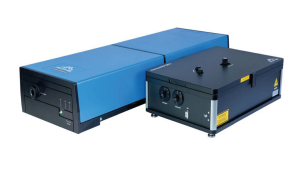
HarmoniXX FHG
The HarmoniXX allows access to the wavelength range of 190 … 215 nm (6.5 … 5.77 eV) by mixing the THG with a fundamental wavelength to create the fourth harmonic. The harmonic pulses are of narrow bandwidth nature, enabling a high resolution across the entire tuning range.
Levante Emerald HP OPO
The generation of high power tunable UV radiation is based on a widely tunable picosecond OPO with computer controlled tuning, pumped by an industrial high power green laser and with subsequent frequency conversion to reach UV wavelengths below 200 nm.
Pump Laser
Paladin 532 – 20000 from Coherent Inc. is ideal for pumping the OPO. It is enabling a wide tuning range and high-average powers of the OPO output. Of course, other pump lasers can be incorporated into the setup as well.
